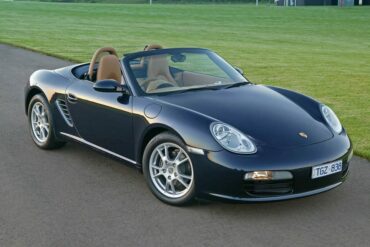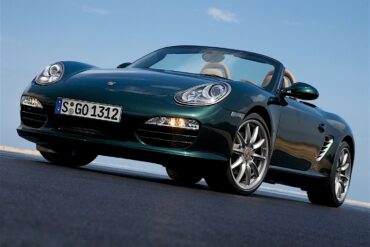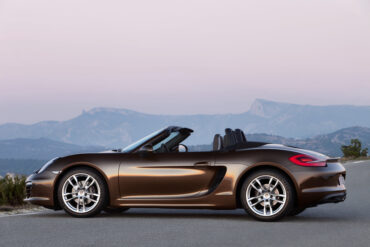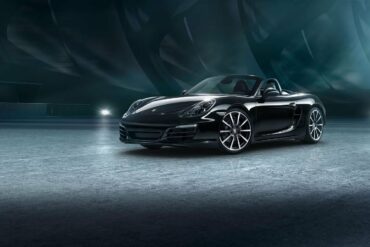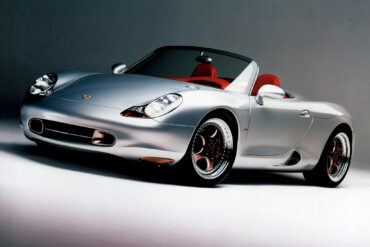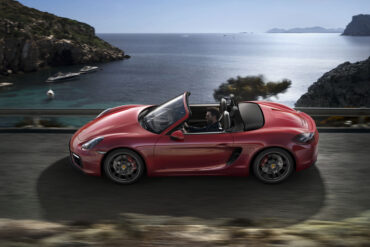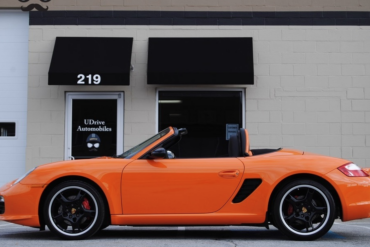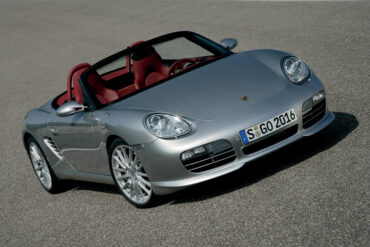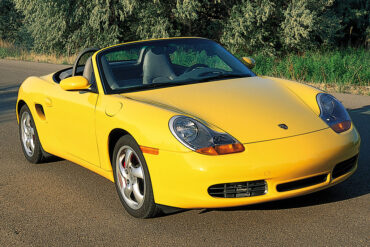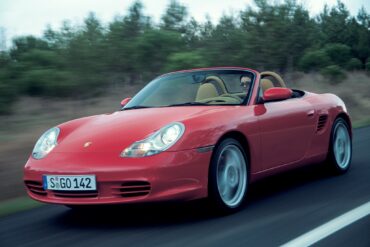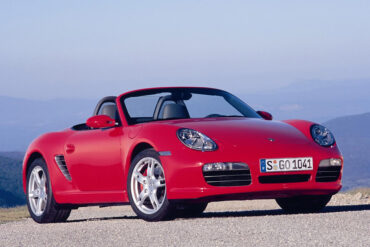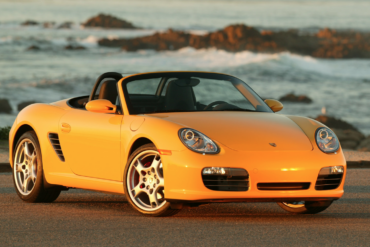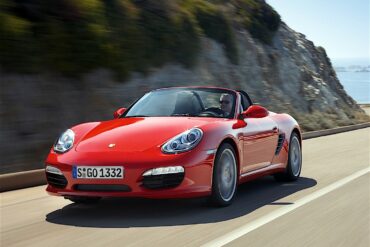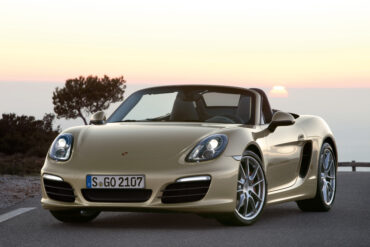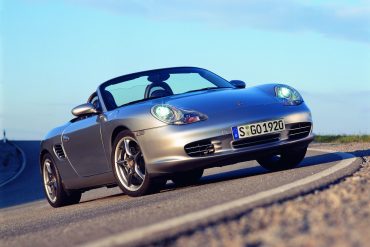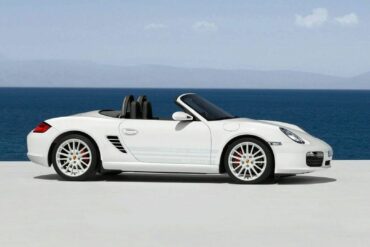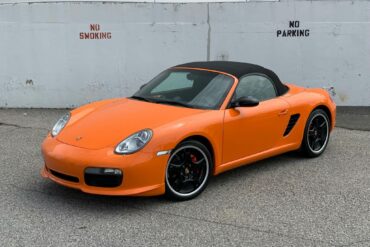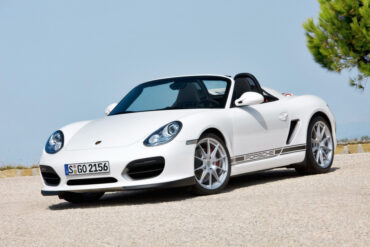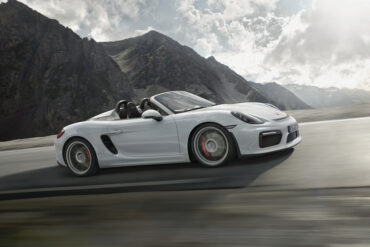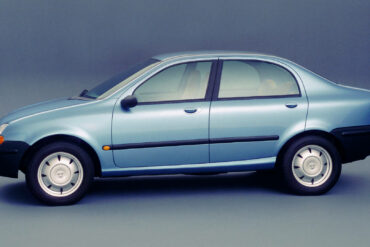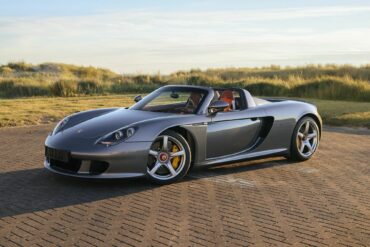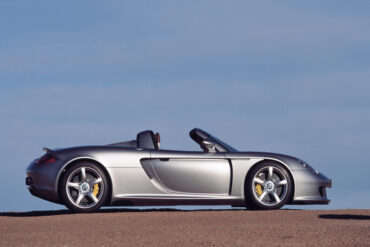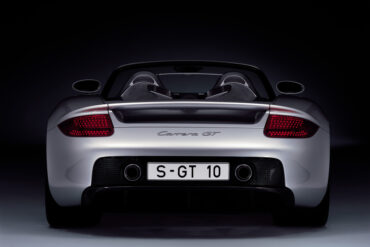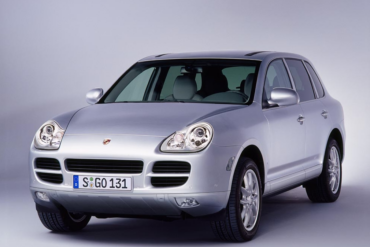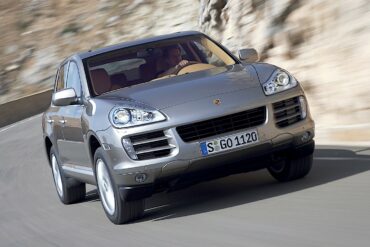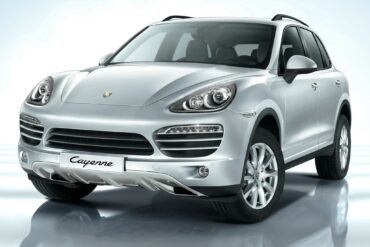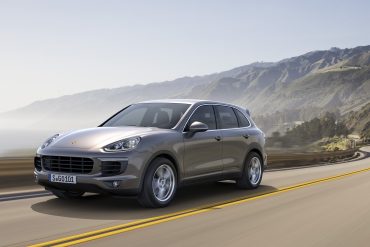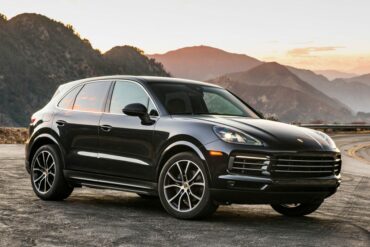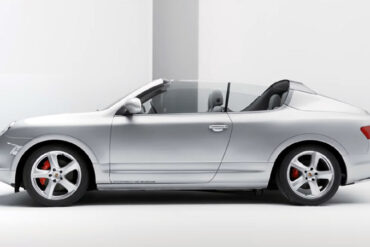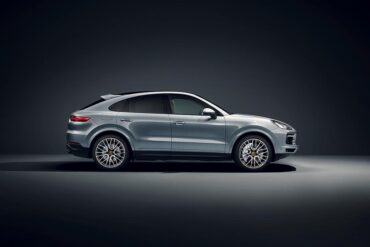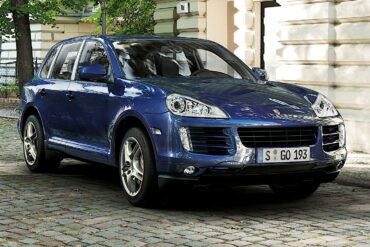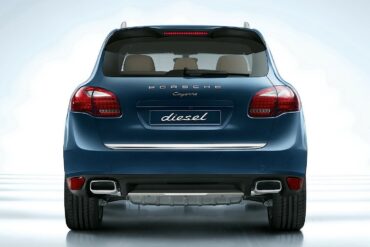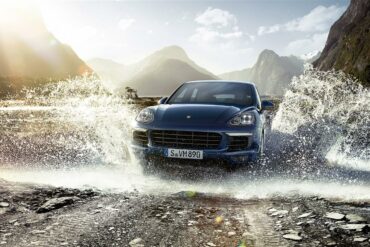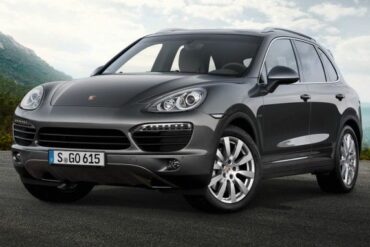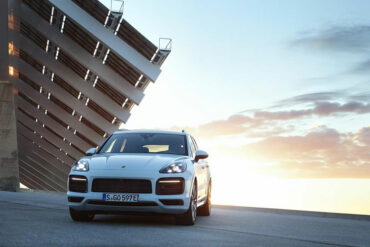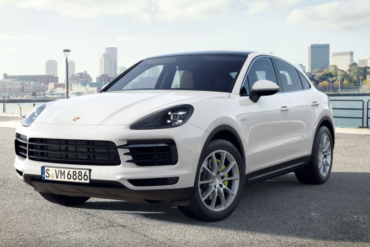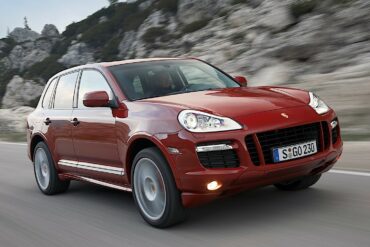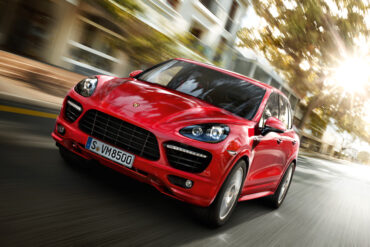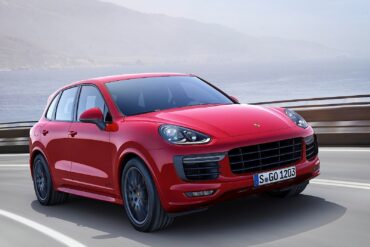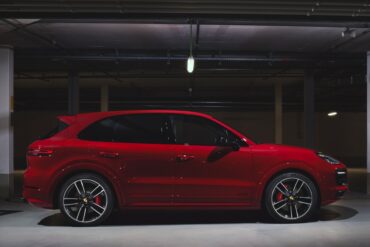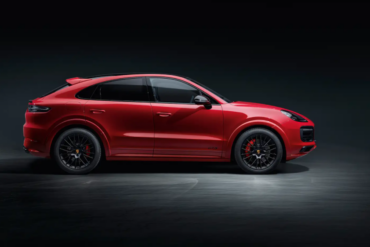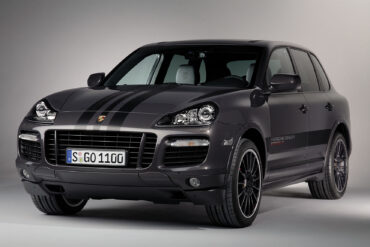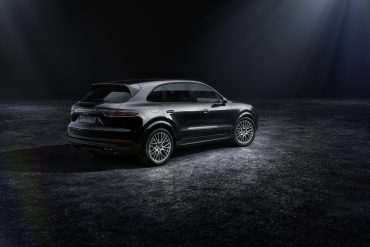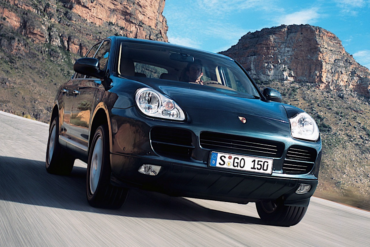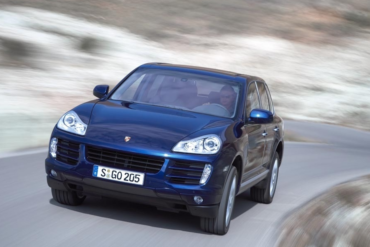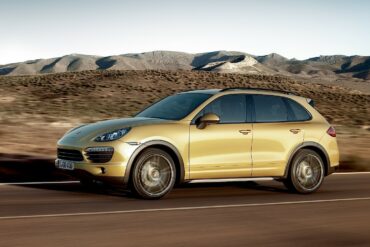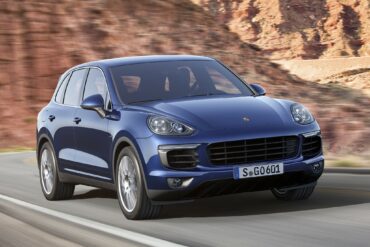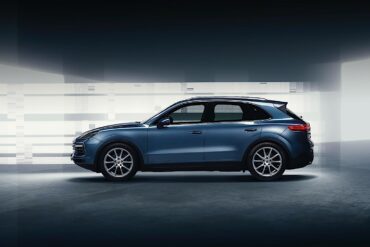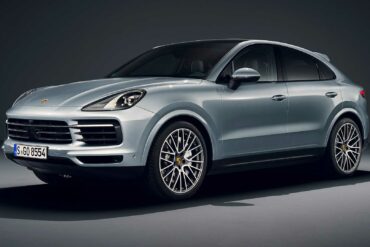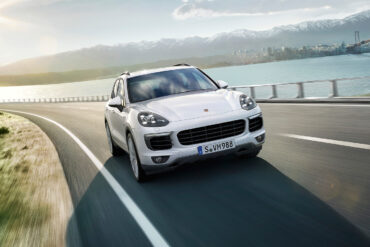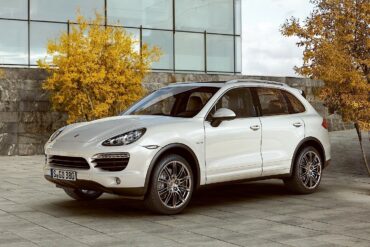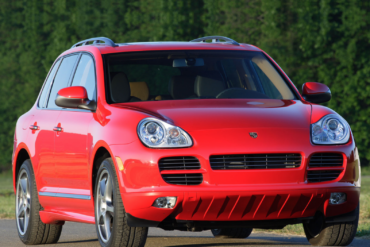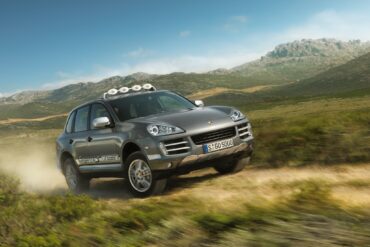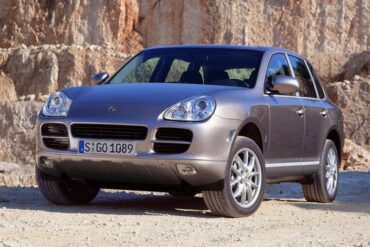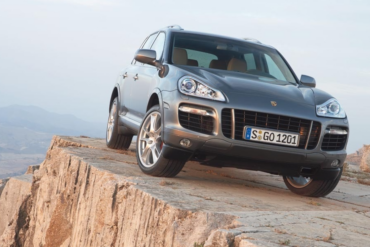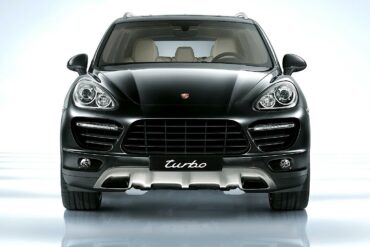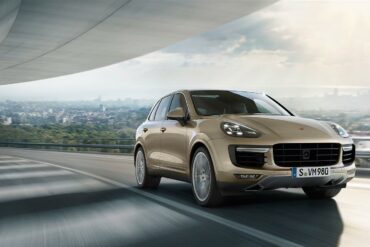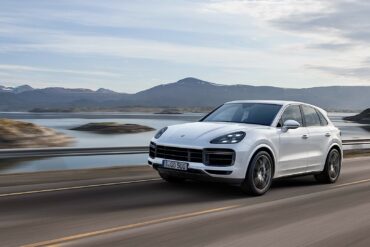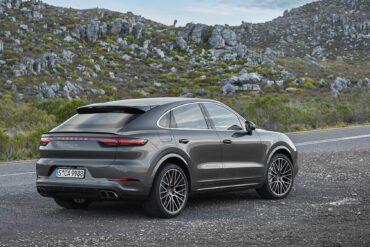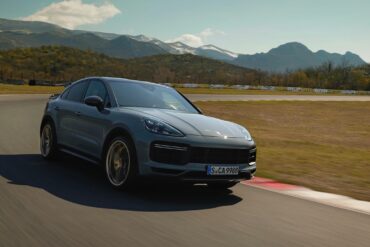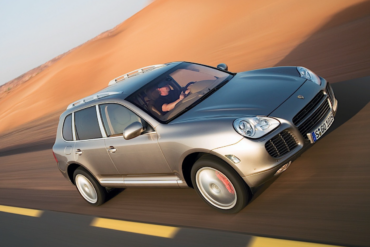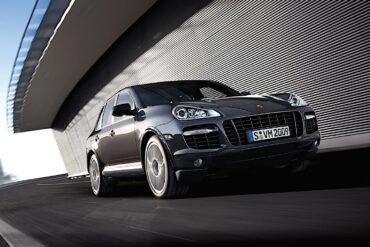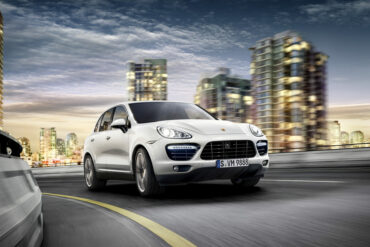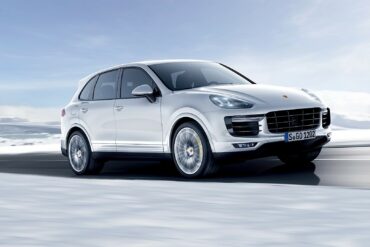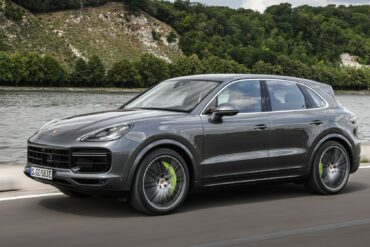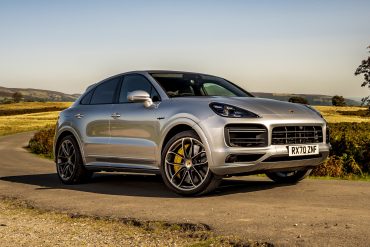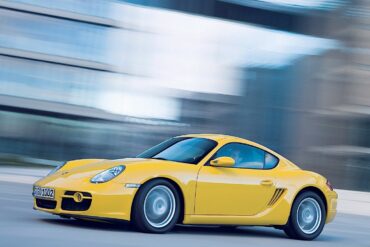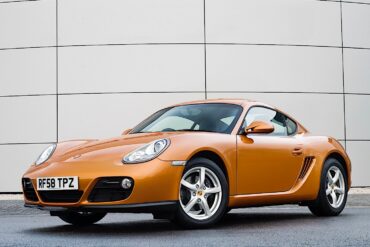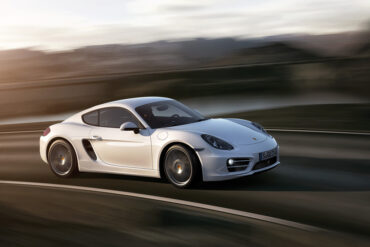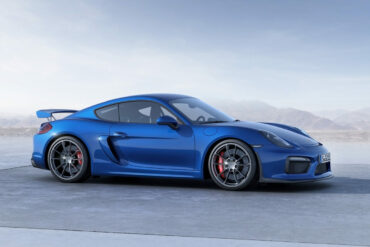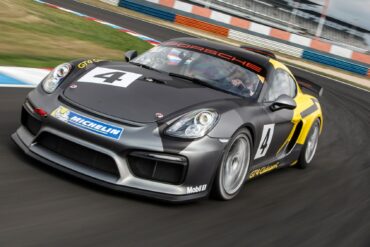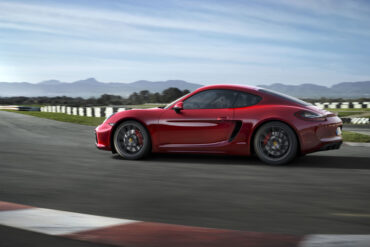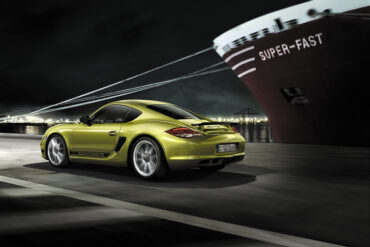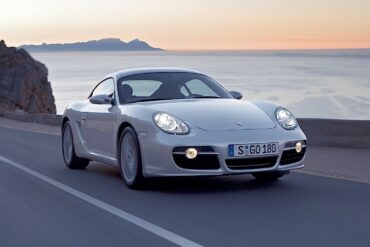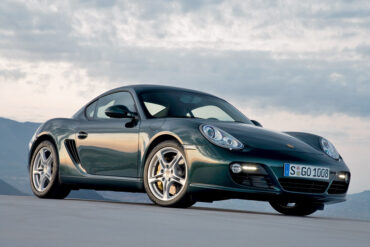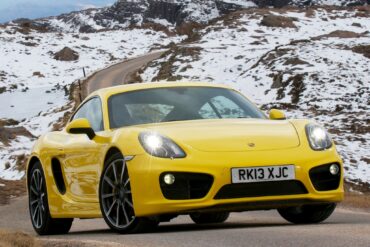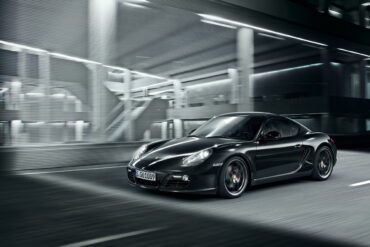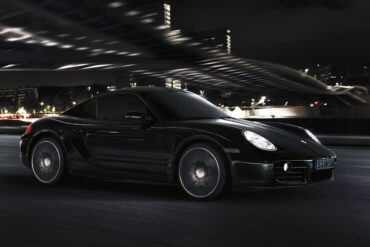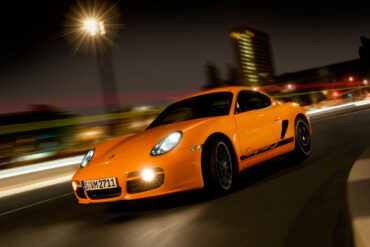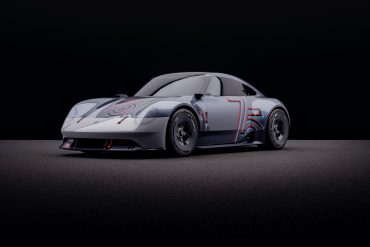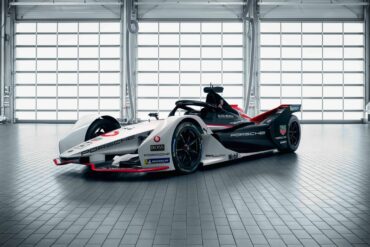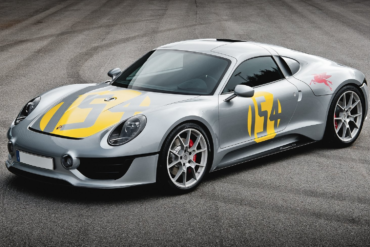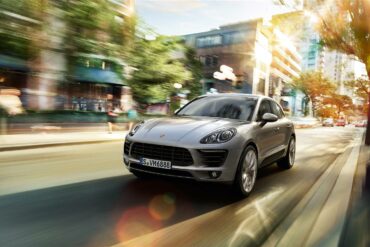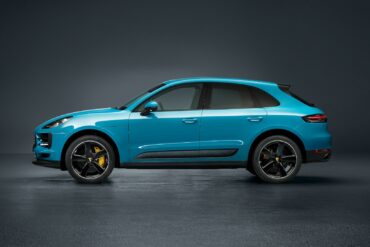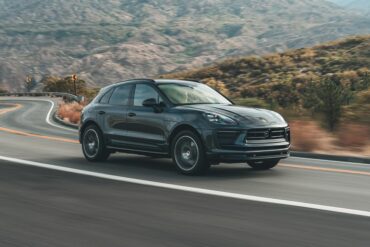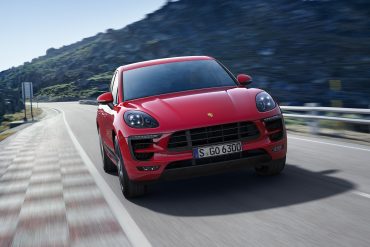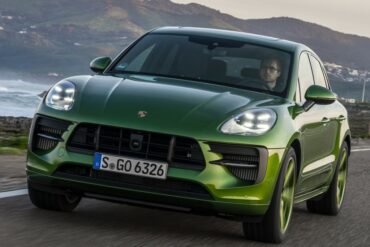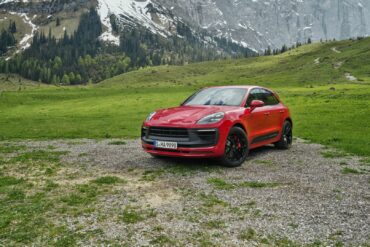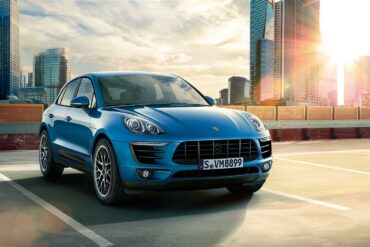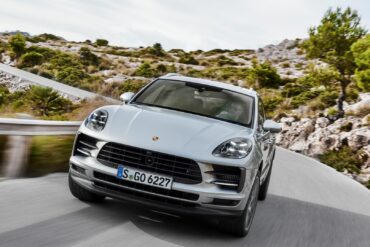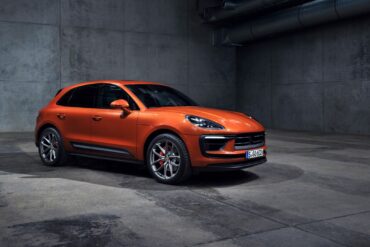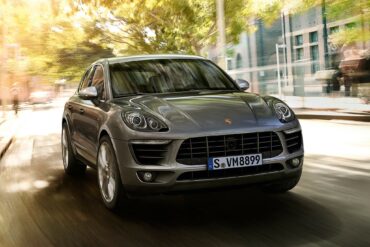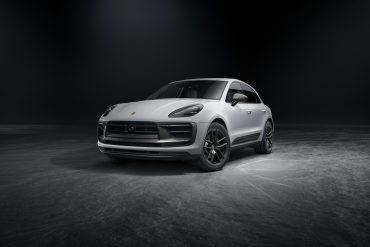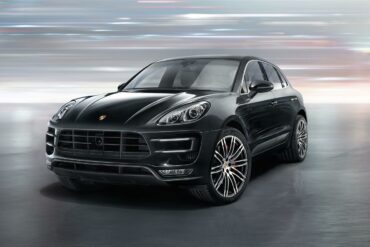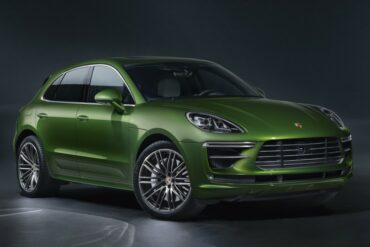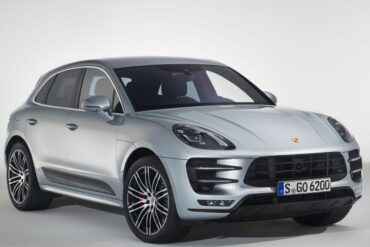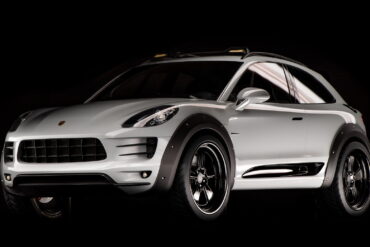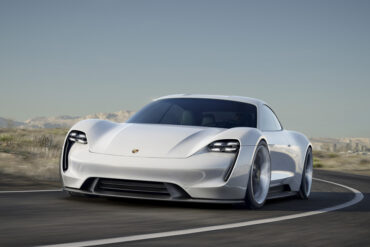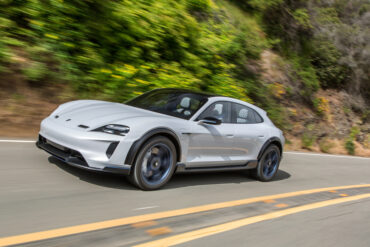The 2007 model year Boxster got a change that most people don't think is significant, but is. Model year 2007 is when the base Cayman joined the 987 lineup. The interior and exterior remained mostly the same, but the Boxster S received the Cayman S 3.4-liter flat six while the 2.7 in both the Boxster and new Cayman received VarioCam Plus, which bumped horsepower up to 245. Think of this model year as Porsche taking the changes to get the base Boxster 2.7 to the same level as the recently introduced base Cayman.
In 2008, the second generation of the Boxster received new technologies and more power. It reached almost the same power as the former Boxster S, from the first generation. The 2.9-liter unit replaced the older 2.7-liter engine and offered 10 hp more than the older engine. It was paired as standard to a 6-speed manual, and a 7-speed PDK (Porsche dual-clutch) automatic was available as an option. The outside gets some welcome design tweaks also, while on the inside we get some updates and more technology options.
The third generation Boxster was a bigger car than the 987 it replaced, but it was also lighter and more powerful. The 2013 model year Boxster went through a downsize program and received a 2.7-liter boxer engine, which was 0.2-liter smaller than its predecessor. With 261 bhp @ 6700 rpm and 206 ft lbs @ 4500 rpm the base Boxster still felt underpowered to many. The base 981 Boxster got a 6-speed manual gearbox or you could opt for an optional 7-speed reworked PDK. The base car is plenty fast but if it were our money, we would opt for the more powerful Boxster S.
The mid-engine roadster is powered by the 2.7 liter flat-six engine with 265 hp. Its color concept remains consistent with the soft top and supplemental safety bar which are both finished in black. The wind deflector reduces undesirable turbulence when the soft top is down. 20-inch Carrera Classic wheels and the Bi-Xenon™ headlights with Porsche Dynamic Light System (PDLS) set distinctive highlights, while standard two-zone air conditioning and heated seats provide a higher level of comfort for both driver and passenger. The Porsche Communication Management system is included as standard.
The year was 1993 and the month was January when Porsche took the wraps off the Boxster design study at the Detroit Motor Show. The public and automotive media received the newcomer will great enthusiasm, celebrating Porsche’s decision to embrace the mid-engine configuration once more with a feeling. But better still, the Boxster saved Porsche from bankruptcy. This is the car that played a big part in Porsche's success moving forward.
The two most powerful and fastest mid-engine sports models from Porsche are ready and raring to go: with uprated engines and excellent PASM chassis the Boxster GTS and Cayman GTS set new benchmarks for sportiness in their segment. 3.4 L naturally aspirated flat 6 is good for 330 hp. Sport Chrono package is standard. This means that in conjunction with the optional Doppelkupplungsgetriebe (PDK) and the active Sport Plus button, the Boxster GTS sprints from 0-100 km/h in 4.7 seconds.
Porsche unveiled its 2008 Limited Edition Boxster and Boxster S models at a private gathering at the occasion of the 2007 New York Auto Show. Largely inspired by the 2007 911 GT3 RS, only 250 examples of each model were produced in brilliant orange. Other special exterior features included glossy black painted mirrors, alloy wheels, front and side air inlets, and model designation.
In November 2007, Porsche announced a commemorative RS60 Spyder edition of the Boxster to celebrate Porsche's 1960 win in the 12 Hours of Sebring in Florida. Only 1,960 units were produced worldwide with each model bearing a numbered production badge on the dash. The RS60 Spyder came only in GT Silver Metallic exterior colour while the standard interior is Carrera Red leather, with dark gray leather as an option. The RS60 came standard with 19 inch SportDesign alloy wheels, Porsche's Active Suspension Management System, and a sports exhaust that increased the engine output to 303 PS (299 hp; 223 kW).
In 2000, Porsche gave us the Boxster S. With a 3.2 liter naturally aspirated Flat-6, it was good for 250 bhp and 225 ft lbs of torque, up by 25% on the base 2.7 liter Boxster. Hardward changes, a 6-speed gearbox and all this extra power and torque transformed the Boxster driving experience. From behind the wheel, the Boxster S rushes forward in a way that is missing from the base model, that torque increase really making itself known, especially in the midrange. 0 to 60 mph now takes 5.60 second (compared to 6.5 for the 2.7 L base model). Top speed is 161 mph and the quarter mile is 14.1 seconds.
The Boxster S was revised along with its Boxster version in 2003. From the outside, the 2002 Boxster S featured an apron with three air-intakes, one more than the non-S version. The 3.2-liter unit was installed in the Boxster since 2000, but after the facelift it was improved by 10 hp, reaching 258 hp. It was paired as standard with a 6-speed manual, or a 5-speed Tiptronic (automatic) as an option. As expected, the manual version was quicker and faster.
The second generation of Porsche Boxster came out in 2004 at the Paris Motor Show and shared almost the same design with its predecessor. The Boxster S came with the 3.2-liter flat-six engine mated to a standard 6-speed manual transmission, while a 5-speed Tiptronic S (automatic) with manual override to select gears was on the options list. The Porsche Stability Management was fitted as standard. It got a bump on power over the prior generation Boxster S as well as a newly modernized exterior design. The interior was also upgraded and was much nicer.
For the 2007 model year, the base Boxster received a revised engine featuring VarioCam Plus to provide a 3.7 kW (5.0 hp) power increase (183 kW (245 hp) the same as the Cayman). The Boxster S' engine was upgraded from 3.2-litre to 3.4-litre, resulting in a power increase of 11 kW (15 hp) more (220 kW (295 hp) the same as the Cayman S). These upgrades made the Boxster series and the Cayman series equivalent in terms of power.
The 2008 facelift of the Boxster S is powered by a new direct-injection 3.4-liter Boxer engine which develops more power than the earlier variant. The styling got a bit updated with some redesigned headlight casings, taillights, and bumpers, while the interior got new infotainment and more material/color combinations. There's a revised 6-speed manual as well as a new 7-speed PDK gearbox. Performance improves, with power now at 310 hp, rocketing the 987.2 Boxster S from 0 - 60 mph in just 5.2 seconds and to a top speed of 170 mph.
Unlike its Boxster brother, the S version of the mid-engined Porsche roadster offered a 3.4-liter unit from its predecessor, but with some improvements and a lower vehicle mass. It offered 311 hp and enough torque to push the car to 100 kph (62 mph) in 4.8 seconds if the car was fitted with PDK (automatic dual-clutch). The two-seat roadster featured a clean design interior, with influences from the Carrera GT super sports-car. The Boxster S was the sweeter of the two models.
In 2004, the Boxster S Special Edition, also called 550 Spyder Boxster S Special Edition was introduced with a production run of just 1,953 cars (paying homage to the 550 Spyder's year of introduction). 500 cars were made for the US Market. These were all painted in GT Silver Metallic, the same colour as the Carrera GT concept presented in 2000, and had unique cocoa-brown full-leather interior as standard with grey natural leather as a no-cost option.
The limited production Boxster S Porsche Design Edition 2 debuted in October 2008 as 2009 model. It featured a free-flowing exhaust system, which raised power from 217 kW (291 hp) at 6,250 rpm to 223 kW (299 hp) at an identical 6,250 rpm. It came in a unified Carrera White paint scheme with matching white 19-inch wheels, a black and grey interior with white gauges, red taillights and light grey stripes along the body. 500 were made for the worldwide market, 32 shipped into the U.S. and 18 into Canada.
Porsche gave us something special in 2008, the Limited Edition Boxster and Boxster S. Pricing started at $59,900 for the Boxster S version. The Limited Edition’s bright orange paint was previously featured on the race-ready Porsche 911 GT3 RS. The Limited Edition is equipped with a sport exhaust system, and safety bars (also painted orange). The SportDesign package is also included.
On 5 November 2009, Porsche officially announced the Boxster Spyder, which was the lightest Porsche on the market at the time, weighing 1,275 kg , 80 kg lighter than a Boxster S. This was achieved through the elimination of the conventional soft top's operating mechanism, the radio/PCM unit, door handles, air conditioning, storage compartments, cup holders and large LED light modules on the front fascia, although some of these could be re-added to the car in the form of options. Weight saving was also gained using aluminum doors, an aluminum rear deck and the lightest 19-inch wheels.
Following in the footsteps of the nineteen fifties and sixties 356 Speedsters, 550 Spyders, different 718 Spyders and the two thousand ten Boxster 987 Spyder, the Boxster 981 Spyder is by far the most powerful of them. The power-to-weight ratio of the original 718 Spyder 1.7- and 2.0-litre 4-cylinder models was better though already 55 years earlier. Visually the Porsche Speedsters and Spyders are characterized by their unique side view silhouette - the result of the low windscreen and low roofline when the temporary canvas top is fitted.
Porsche designed the C88 experimental car for China. The brief was simple: the car had to be cheap, efficient, large enough to carry five people, and be built in China under a joint venture with First Automotive Works (FAW). Given the rate at which the Chinese car market was growing – not to mention the 1.2 billion people who lived there at the time – it’s no surprise that a number of firms responded with plans and prototypes. Porsche was one such company.
Porsche's open-top, 603-hp, manually shifted Carrera GT makes other supercars seem quaint. It is arguably the best supercar ever made. Under the skin, the car used many modern hallmarks of motor sport engineering: a carbon fiber chassis, dry sump lubrication, inboard suspension and a mid-mounted engine that was engineered to sit as low as possible to ground. Performance on paper and in person was spectacular. Peak supercar.
Porsche Carrera GT Contents Chassis & Handling Design, Styling & Interior Pricing Performance & Specs Model & Pricing Info Suspension...
For the 2000 Paris Motor Show, Porsche prepared a concept supercar that eventually turned into a limited production car. The concept's basic shape and specification were close the production version, which included a low-mounted V10 engine that was sourced from their scrapped Le Mans prototype program in 1999. Two functioning concepts were produced for both the European and North American show circuits.
The first-generation Cayenne was what saved Porsche. The based Porsche Cayenne 955 entered the market to a mixed reception, although it was the performance vehicle among SUVs and had comparably good handling as well as powerful engines.[3] The lineup initially consisted of the V8-powered Cayenne S and Cayenne Turbo. Later in the model cycle, VR6 and diesel-powered versions joined the lineup. The base model is powered by a VW 3.2-L VR6 engine producing 250 PS (184 kW; 247 hp). The engine is largely the same as the VW engine.
The 2008 model year marks the launch of updated Porsche Cayenne. With a striking new face that features a dramatic new headlight design and with a wide and muscular new body accented by broad wheel arches, the 2008 Porsche Cayenne's newly sculpted sheetmetal provides vivid visual testimony to the vehicle's enhanced technical features. Inside, the interior has received an important update with new infotainment unit, new gauges and more.
The second-generation Cayenne moved the game on for SUVs. It has a nicer design, more powerful engines and much nicer interiors. The base V6 Cayenne was good for 299 hp @ 6,300 rpm and 295 ft lbs of torque. Acceleration was decently brisk with 0 - 60 mph over in 7.5 seconds and top speed of 143 mph. The car was slightly longer, wider, and higher than its predecessor. All new models shared the new headlight graphics with additional lights at the inside so unmistakably Porsche.
In July 2014, Porsche launched a facelifted Cayenne range for the 2015 model year. Minor exterior alterations and new power-train options. For the base Cayenne, there was a a mildly revised exterior and interior inspired by the 918 Spyder. Two new interior colors, Carrara White and Palladium Metallic, are new while the two-tone black/beige upholstery is now a no cost option. Dark walnut is also a new addition to the available interior accents. The suspension on all Cayennes has also been revised.
The third generation of the Porsche Cayenne was unveiled in August 2017. The third generation Cayenne is built on a totally new platform, shared with SUVs like the Bentley Bentayga and Lamborghini Urus. It was fitted with important technical upgrades, such as the rear-axle steering system, which allowed a better cornering speed and an easier parking maneuver.
It is not clear if the Cayenne Cabriolet was ever intended for production, but considering how much work was put into the concept car, the project was taken seriously. The car has the nose and brakes from the Cayenne Turbo, but this concept car might have a normally aspirated engine, if at all. Porsche has not unveiled any technical information.
The Cayenne Coupe is a version of Porsche's largest SUV with a heavy dose of extra swagger. Porsche introduced the new variant a year after the debut of the third-generation Cayenne, for the 2020 model year. While we like the look of the coupe, it feels out of place on the base Cayenne (which is more a family SUV choice). A nice package, but we would recommend spending a bit more and going for the Cayenne S or GTS.
The European market asked for a diesel engine and the car-maker had to deliver it to keep the sale up in a struggled market affected by the world financial crisis. The engine was a carry-over from the Audi line-up, with a variable turbocharger system and a 3.0-liter displacement. It offered 240 hp and it was tuned to offer more performance. For instance, at hard accelerations, the system disengaged the AC compressor until the engine reached 2500 rpm.
The V6 diesel engine was the same unit found in the other Volkswagen group models. The 3.0-liter unit offered 240 hp. It was mated as standard with an 8-speed automatic gearbox. Cayenne Diesel Turbo 3.0 176 kW for 2011 model year. In 2012, power increased to 180 kW. 2013 saw the launch of the Cayenne Diesel S Turbo 4.1 281 kW version. The Cayenne Diesel with its 240 bhp is hardly a top performer.
The facelifted version of the Porsche Cayenne was introduced in 2014 and it received a restyled design, new features, and, most important, upgraded engines, such as the V6 diesel version. The V6 diesel version played an important role in this and Porsche decided to keep it in the stable. Along with the facelifted version of the second generation Cayenne, a new V6 diesel was installed. Under the hood, the 2014 Cayenne Diesel offered an enhanced version of the 3.0-liter V6 diesel unit.
The Cayenne S diesel earns the “S” by way of a twin-turbocharged 4.2-liter diesel V-8 engine that pumps out a prodigious 382 hp and 627 lb-ft of torque. By comparison, the non-S Cayenne diesel’s 3.0-liter V-6 spits out a relatively puny 240 hp and 406 lb-ft of twist. Interestingly, the S diesel gets Porsche’s engine stop-start system standard; here in the U.S., the fuel-saving feature isn’t available on the pedestrian Cayenne diesel.
The Cayenne S diesel earns the “S” by way of a twin-turbocharged 4.2-liter diesel V-8 engine that pumps out a prodigious 382 hp and 627 lb-ft of torque. By comparison, the non-S Cayenne diesel’s 3.0-liter V-6 spits out a relatively puny 240 hp and 406 lb-ft of twist. Interestingly, the S diesel gets Porsche’s engine stop-start system standard; here in the U.S., the fuel-saving feature isn’t available on the pedestrian Cayenne diesel.
The E-Hybrid version of the current Cayenne came in 2018. Porsche used the same platform as the Bentley Bentayga and the Lamborghini Urus for the third generation of the Cayenne. This platform was designed from the beginning to accept a hybrid version. It also featured a rear-axle steering system which really helps with low speed turning and cornering at speed.
Porsche fitted the Cayenne E-Hybrid with a turbocharged 340 hp 3.0-liter V6 engine combined with a 136 hp electric motor for the drivetrain. Total combined power output reached 462 hp. The whole assembly was mated to an 8-speed automatic transmission that sent the power in all corners. Now it comes with a coupe body? Not sure the combination makes much sense to us, but hey this is Porsche and they know more than we do I guess.
The Cayenne Cayenne GTS was fitted with a 4.8-liter V8 unit, which developed 405 hp. Unlike the Turbo, it was offered with a 6-speed manual as well, while the Tiptronic S (automatic) 6-speed transmission was on the options list. This was the true enthusiasts SUV and the sweet spot in the Cayenne lineup. It also looked great with the black accents and more agressive touches throughout the exterior.
The Cayenne GTS is the hair-splitter’s latest achievement. It’s a Cayenne powered by the same 4.8-liter V-8 as seen in the Cayenne S but tuned for an additional 20 horsepower and 11 pound-feet of torque to make 420/380. It wears a body similar in style to the Cayenne Turbo, meaning a domed hood, blacked-out trim, and body-color fender extensions and side skirts. And it’s loaded with standard performance gear that is optional on lesser Cayennes. What isn't there to like?
For the 2015 facelift, the Cayenne GTS was improved in every way, offering better performances and lower fuel consumption. But unlike the rest of the range, it offered a sportier look. That side was reserved for the GTS, which took its badge from the 1963 Porsche 904 GTS. It was the first Porsche to revive that acronym.
The V8 is back in the Cayenne GTS after a break for the second generation (it got a twin-turbo V6). The Cayenne GTS is now also available in the new "Coupe" body style. A twin-turbocharged 4.0-liter V8 is good for 453 horsepower and 457 lb-ft of torque. Zero to 60 mph takes a claimed 4.2 seconds if the Sport Chrono package is fitted, and top speed rises to 168 mph. he only transmission available is an eight-speed automatic. This is one sweet ride.
Three letters are all it takes to describe the glint in your eye and intense goosebumps – GTS. Pure and thrilling: the Cayenne GTS models bring a motorsport atmosphere to the road. Enough power to strive for more freedom: with 453 hp and 457 lb.-ft. of torque, the 4.0-liter twin-turbo V8 engine exudes a drive that helps achieve your goals. The striking black accents on the front fascia, sideskirts and aerodynamic roof spoiler combined with the coupe bodystyle.
An exclusive limited edition Cayenne GTS “Porsche Design Edition 3”. Limited to just 1,000 units worldwide, the limited edition Cayenne adds equipment and Porsche Design styling touches to stand out from the crowd. Distinguishing the special edition model is a Lava Grey paint scheme, extended roof spoiler, racing stripes, and 21in alloy wheels in a matching anthracite finish. This special edition looks the goods, but sadly there were no mechanical changes to differentiate it from the core GTS.
The third generation of the Porsche Cayenne was unveiled in August 2017. In 2022, the Cayenne added the Platinum Edition to the SUV and coupe body styles. The Platinum Edition Cayenne applies a coat of Satin Platinum paint to a number of the vehicle's badges, as well as its fascia-mounted intake treatment and its distinct 21-inch wheels. Black exhaust tips and window trim add an extra hint of menace to the model.
The first-generation Cayenne saw the introduction of the Cayenne S in 2002. While the base Cayenne had a 3.2-L VR6 engine, the Cayenne S got a 4.5 L V8 with more power and torque. The extremely short and compact normal-aspirated V8 produced 340 hp and 310 lb⋅ft of torque. Acceleration for the Cayenne S is strong for an SUV, with 0–60 mph taking 6.9 seconds and the top speed being 150 mph. The Cayenne S also have some visual changes to better identify it, but was otherwise standard Cayenne fair.
The entire Cayenne range got a 2008 facelift. The big changes were cosmetic, with Porsche getting rid of the Porsche 996-inspired headlights and sharpening up the Cayenne S lines. A new, vertical, daytime running light appeared on the outer side of the side-scoops and the center grille was smaller. The Cayenne S started to better develop its own unique personality with the 17” light-alloy wheels fitted as standard. The Cayenne S also got cool exhausts.
Car and Driver said:' "More horsepower and less weight add up to a winning combo in the Cayenne S". We agree. Alongside the weight loss and the striking new exterior and interior design, Porsche got an extra 15 hp from the Cayenne S’s naturally aspirated 4.8-liter V-8. A new transmission with two more forward ratios (now an 8-speed) transforms the drive. Cayenne S hits 60 mph in 5.5 seconds and clear the quarter-mile in 14.1 at 101 mph.
The Cayenne S gains V-6 power during its midcycle update. Porsche advertises more power und more efficiency—the new motor is up 20 horsepower to 420. Torque is a healthy 406 lb-ft, but the turbo-six lacks the personality of the V-8. Which, as V-8s go, was quite nice if rather generically Teutonic. Like, perhaps the iron-fisted Swabian middle manager of V-8s. It keeps the 8-speed automatic. Porsche claims that it has made interior revisions, but the innards look pretty much the same to us, save for the new steering wheel.
The 434-hp Cayenne S goes from 0 - 60 mph in just 4.2 seconds. Its twin-turbocharged 2.9-liter V-6 helps it to crush the quarter-mile in just 12.8 seconds. Perhaps even more impressive is that the on the optional 21-inch Pirelli P Zero summer tires, the Porsche has a 0.93 g of cornering grip. This is basically a sports car in an SUV body. The Cayenne's dynamic excellence is unmatched in the segment. Easily the best SUV on sale today.
The 434-hp Cayenne S goes from 0 - 60 mph in just 4.2 seconds, same as the SUV. In fact, the Coupe and SUV share everything from engines to suspension components to interior trimmings and onboard tech, with only a sloping roofline setting them apart. Our advice. If you want less practicality with a cool fastback roofline, the Porsche Cayenne S coupe is a more stylish version of the Cayenne S. A great all rounder.
The exterior of the 2014 Cayenne Hybrid was slightly different than the rest of the range. From the 4-LED daytime running lights and the green brake calipers to the special light-alloy wheels. The rear roof-spoiler was standard as well. Unusual though, even if the German SUV was a plug-in hybrid, it featured four round exhausts. The engine was a 3.0-liter supercharged V6 which offered 333 hp. It was helped by a 95 hp electric motor.
The absolute highlight of this new generation is the world debut of the Cayenne S Hybrid with its technically highly sophisticated parallel full hybrid drive and fuel consumption in the New European Driving Cycle of just 8.2 litres/100 kilometres (equal to 34.4 mpg imp), which means CO2 emissions of just 193 g/km. The Cayenne S Hybrid therefore combines the performance of an eight-cylinder with the economy of a six-cylinder running on much less fuel.
The Cayenne S Titanium Edition was designed specifically for the U.S. and Canadian markets. Introduced only for 2006 (as a pre-GTS concept), it was a 1 year exclusive, limited production SUV featuring a lightweight steel body, aluminium hood, titanium-painted accented body parts, side lower rocker body panels, Sport-Quad Tip Exhaust chrome tailpipes, 19" titanium painted alloy wheels, bi-xenon headlights, two-tone interior upholstery, Porsche PCM 2.0 w/ trip computer navigation, MP3 audio and Bose cabin surround sound.
Named after the 7200km intercontinental rally which the Cayenne won in 2007, the Porsche Cayenne S Transsyberia Special Edition offers a number of enhancements. It takes the 4.8-liter V8 unit that develops 405bhp and 500Nm of torque from the range topping GTS allowing the model to drop its base 0-60 mph time down by 0.5 seconds to 6.1 seconds. It is mated to a six-speed manual gearbox (automticac optional), with a 4.1:1 drive ratio and air suspension coupled with PASM.
The first-generation Cayenne Turbo 955 has 450 PS (331 kW), and can accelerate from 0–100 km/h (62 mph) in 5.3 seconds. Under the hood, the Cayenne Turbo was fitted with a turbocharged 4.5-liter V8 unit mated to a standard 6-speed automatic. Thanks to the standard air-suspension, the Turbo version could get up to 28 cm (11”) of ground clearance. The German brand needed a car to sell in volumes and save them from a foreseeable financial collapse. The Cayenne Turbo did just that.
The facelift for the first generation of the Cayenne was introduced in 2007. More powerful in every respect - that is how the new generation of the Porsche Cayenne entered the market. New striking face upfront on a wide and muscular body, with headlights in brand-new design, and with broader, even more powerful-looking wheel arches. The Turbo model 957, featuring a larger 4.8-L engine with 49 hp more power, 0–60 mph time of just 4.9 seconds.
The second generation of the Porsche Cayenne was launched at the 2010 Geneva Motor Show. It was a big improvement over its predecessor and featured an evolved design. For the engine, the Cayenne Turbo featured a 4.8-liter V8 unit which offered 500 hp. For the transmission, the 2010 Cayenne lost the low-range transfer case. The standard transmission was an 8-speed Tiptronic gearbox. All-wheel drive was installed standard as well. Other new improvements led to a decrease in the overall weight by 180 kg (400 lbs).
The Cayenne Turbo facelift was introduced in 2014 as a 2015 MY. Think of it as an enhanced version of the non-facelifted version. It offered the same torque as the non-facelifted Cayenne Turbo S, but less power. Under the hood, the revised engine offered 20 hp more than its predecessor. The exterior of the 2015 Cayenne was enhanced with a sharper design and clear lines. The front fenders, the grille, and the headlights were entirely new, with LEDs.
Its top model was the Cayenne Turbo, with 550 hp under the hood. The third generation came to fix what its predecessor was criticized for: the exterior design. While the second generation featured some details that could remind of a Hyundai, the third generation was completely new from tip to toe. Under the hood, the Cayenne Turbo featured a 4.0-liter V8 unit with two turbochargers. It was mated as standard to an eight-speed automatic transmission.
Car and Driver said "It isn't really a coupe, but this 541-hp fastback SUV is the same awesome Cayenne Turbo underneath—with a sexier backside". We agree. Here's what you need to know. With its 541-hp twin-turbo 4.0-liter V-8, eight-speed automatic transmission, and all-wheel drive, the new fastback version of Porsche's largest SUV is mechanically identical to the conventional Cayenne Turbo SUV, and the two vehicles feel exactly the same from behind the wheel.
Porsche is stuffing a built twin-turbocharged 4.0-liter into the Cayenne Coupe, and it's the most powerful V-8 the German automaker has ever produced. It makes 631 horsepower in this new Turbo GT model, and Porsche says its factory driver Lars Kern set a new SUV lap record at the Nürburgring Nordschleife in it lapping the 12.9-mile course in 7:38.9. The new Cayenne will arrive in the U.S, only in Coupe form, next year starting at $182,150.
Porsche made things more interesting with the launch of a Turbo S version in 2006 to compete with the Mercedes-Benz ML 63 AMG. The Turbo S is powered by a twin-turbocharged 4.5 L V8 that produces 521 PS (383 kW; 514 hp) and 720 N⋅m (530 lb⋅ft) of torque; Acceleration from 0–60 mph (97 km/h) takes 5.0 seconds and the top speed is 171 mph (275 km/h); It features a six-speed automatic Tiptronic transmission.
The facelift for the flagship Cayenne came in 2008. The Porsche Cayenne Turbo S is the most powerful Cayenne ever built. Sharing the same essential 4.8-liter V8 engine as the Cayenne S, GTS and Turbo, the Turbo S got 550 horsepower and 553 lb.-ft. of torque. That's a ten percent increase in power and a seven percent boost in torque over the Cayenne Turbo. 0 to 60 mph is over in 4.7 seconds on its way to a track-proven top speed of 174 mph. Like the Cayenne S and Cayenne Turbo, the Turbo S comes standard with a six-speed Tiptronic S driver-shiftable automatic transmission.
As the flagship of the Cayenne army, the Turbo S was well received by those who were looking for a faster SUV. And it wasn't only the speed, but also the cornering speed that the Turbo S was capable of. The engine was based on the 4.8-liter V8 unit installed in the Cayenne S and Cayenne Turbo, but with a higher compression ratio that led to 50 more hp. The standard transmission was an 8-speed Tiptronic S.
The Turbo S version was the sportiest version for the second generation of the Porsche Cayenne and, along with the rest of the stable, it received a facelift for the 2015 model year. The revised engine offered 20 hp more than its predecessor. It was the same twin-turbo 4.8-liter V8 unit and it was paired to an 8-speed auto and like the Turbo, it was offered with a standard air-suspension but adds Ceramic Brakes system.
The Cayenne Turbo S E-Hybrid models, mix ultimate performance with comfort and Infotainment. The twin-turbo V8 engine and electric motor combination make it an absolute monster. So much so, that it became top dog in the Porsche SUV lineup, relegating the 541-hp Cayenne Turbo to second place. This is an SUV that has the price, prestige, and performance. Generating 670 combined horsepower and 633 lb-ft of torque.
The Cayenne Turbo S E-Hybrid Coupe mixes ultimate performance with comfort and Infotainment. The Turbo GT has all the attributes to be ahead of the game from the start. The twin-turbo V8 engine and electric motor combination make it an absolute monster. So much so, that it became top dog in the Porsche SUV lineup, relegating the 541-hp Cayenne Turbo to second place. This is an SUV that has the price, prestige, and performance, but it is the Coupe that has the looks. Generating 670 combined horsepower and 633 lb-ft of torque.
A year after the Cayman S and the second generation of the Boxster were unveiled, Porsche released the non-S version of its mid-engine sport-coupe vehicle. The “regular” Cayman was still a sports car that could top a 0 to 100 kph (0-62 mph) in 6.1 seconds so it couldn't be called a “slow” car. It was slower than its brother S, but it was still a daily-driver sports-car. The Cayman was built to be not only a fast and nimble car but a practical vehicle as well.
Four years after the introduction of the Cayman S, and three after the regular Cayman, the mid-engine sport-coupe from Porsche received an important update. The facelifted version of the Cayman offered a completely enhanced package. From the exterior to the interior, from the engine to the gearbox and suspension, it was reworked. It might be mistaken with a new model if the Porsche internal coding system wouldn't be the same as on the 2006 Cayman (987C). The engine displacement was increased from 2.7 to 2.9-liter and received direct fuel injection.
The 2013 model year saw the introduction of an all new platform, the new 981 Cayman. The differences between the 981 and 987 were significant, but not unexpected as many of the new technologies were already introduced in the new 991 and 981 Boxster. This is a big year with lots of changes in many areas. The base engine for the Cayman was a 2.7-liter flat-six unit that boosted out 236 hp and it was mated to a standard 5-speed gearbox. A 5-speed Tiptronic sequential gearbox was available as an option.
In 2015, Porsche announced the car we all thought Porsche would never build. It has been a few years since it has been released and the excitement It was the first time Porsche introduced lets the motorsports guys in Weissach sprinkle their magic on a Cayman. With components sourced from the 911 GT3, an engine carried over from a Carrera S and a tweaked and tuned chassis, brakes and aerodynamics, Porsche’s engineers did their best to produce the perfect mid-engine sports car for road and track use. Compared with the standard Cayman, the GT4’s chassis was lowered by 30mm and bigger brakes were added, with many aspects of its suspension carried over from the 911 GT3. Some serious motorsport kit. One of the best ever.
In 2015, Porsche announced the car we all thought Porsche would never build. It has been a few years since it has been released and the excitement It was the first time Porsche introduced lets the motorsports guys in Weissach sprinkle their magic on a Cayman. With components sourced from the 911 GT3, an engine carried over from a Carrera S and a tweaked and tuned chassis, brakes and aerodynamics, Porsche’s engineers did their best to produce the perfect mid-engine sports car for road and track use.
The Cayman GTS arrived a s 2014 model year car and boy was it special. It featured a marginally more powerful engine, a new body kit, new 20-inch Carrera S wheels, new Bi-Xenon headlights, and a new sports exhaust system. The Cayman GTS is longer than the Cayman and the Cayman S by 30.5 mm (1.2 in) due to its bumpers. The new, optional passive sport suspension allows the Cayman GTS to have a 20 mm lower ride height compared to the Cayman equipped with standard passive suspension or 10 mm lower compared to one with the standard-equipped PASM. Power was 330 bhp @ 6700 rpm and 0 - 60 mph was a brisk 4.1 seconds.
On November 17th - 2010, Porsche CEO Matthias Mueller unveiled the 2012 Cayman R to an excited audience at the Los Angeles International Auto Show. Porsche pretty much threw the kitchen sink at this one, applying all they know and have available without actually redesigning the car. Every performance option on the list, and then some that weren't on the list have found their way into the Cayman R. A weight savings of 121 lbs. (55 kg) was achieved and it transformed the Cayman. We are going out on a limb here, but we think the Cayman R may be one of the best Porsche cars ever made.
After the initial announcement that Porsche was going to release a small mid-engine coupe, we were all excited. In 2005 we finally got the Cayman S. A fast, mid-engine coupe in the Porsche lineup, starting with the S version as a 2006 model year car (the base model came a year later). The 2006 Porsche Cayman S was based on the Boxster series, the two-seat coupe incorporated dramatic new styling, a powerful 295 hp (SAE) engine, and features and options made popular by Porsche's current range of sports cars.
Four years after the introduction of the Cayman S, the sportier version of the mid-engine sports coupe Porsche was refreshed. It was even faster and could carry more cornering speed. The facelifted version of the Cayman S offered a completely enhanced package. From the exterior to the interior, from the engine to the gearbox and suspension, it was reworked. The engine was kept at 3.4-liter displacement, but due to its new direct-fuel injection system, the power was increased by 25 hp over its non-facelifted version.
For 2013, Porsche gave us the new 981 generation Cayman. The Cayman S engine displacement is unchanged at 3.4 liters. Power is increased by 5 horsepower to 325, shooting the S from 0-60 mph in just 4.4 seconds while delivering as much as 30 miles per gallon (PDK & Sport Chrono+). There are two transmissions choices available in the 2013 Caymans, both carrying over from 2012. The Cayman S come standard with the 6 speed manual gearbox and 7 speed PDK was available as an option. The 981 Cayman S is arguably the best all around sports car that Porsche offers, the right balance between being fun and usable daily.
The Limited Edition Cayman S Black combines many of the high performance benefits found only in the 2012 Cayman R with many other desirable options off the list, options that when combined create a distinct personality for this special car. After the R hit the scene, many potential buyers complained of the inability to order one with many of the highly desirable street options, particularly PASM. The Cayman S Black Edition gets the 330 BHP engine found in the R but without all of the other performance focus.
In the middle of 2008, Porsche introduced the limited edition Cayman Design Edition 1. The Design Edition 1, also know as the DE1, was a Cayman S packaged with many exclusive cosmetic options intended to commemorate the 35th anniversary of Porsche Design. This car was clearly designed for the Porsche enthusiasts who wanted to own a very special Cayman. Buyers of the DE1 received a special briefcase that contained some pretty cool Porsche Design merchandise, including a Design Edition Chronograph Wrist Watch, Sun Glasses, Ballpoint Pen, Pocket Knife, Key Chain and the key to the DE1.
In late 2008, Porsche introduced the limited edition Cayman S Sport. The Sport was a Cayman S packaged with many sport options to create an edgy/sporty Cayman S. Beyond sport options, the Cayman S Sport received new DME software maps created to work with the Porsche Sport Exhaust and a unique Twin Chamber Dual Output Tailpipe that supply the Cayman S Sport with 303 horsepower at 6,250 RPM, making it the first Cayman to break the 300 horsepower ceiling.
Built on the technology platform of the 718 Cayman GT4 RS, the Porsche Vision 357 is a design study that represents outstanding sports car performance. The exterior concept study is the highlight of the special exhibition “75 Years of Porsche sports cars” at the Volkswagen Group’s “DRIVE” Forum in Berlin. The fundamental concept reflects the interplay between tradition and innovation: what would the dream of a sports car of Ferry Porsche might look like today? A tribute to the 356 on its 75th anniversary.
Spark Racing Technology is responsible for a big part of the Porsche 99X Electric. This is the racing car Porsche fielded in Formula E 2019 season. Maximum performance in qualifying mode? 335 horsepower and 174 mph. Zero to 100 kilometers per hour is doable in 2.8 seconds, and the minimum weight including the driver is rated at 900 kilograms of which the battery is responsible for 385 kilograms. In race and attack modes, the output is restricted to 272 and 320 PS, respectively. The useable battery capacity is 52 kWh while maximum recuperation is rated at 250 kW.
This extreme road sports car based on the Porsche Boxster is reminiscent of the groundbreaking Porsche 550 racing coupé that started in 1953 at the 24 Hours of Le Mans. The front and rear bonnet open in opposite directions and fuel is supplied via a central nozzle at the front. At the rear is an eight-cylinder engine with excessive sound development.
Porsche subsequently released a base Macan for select Asian markets and the United Kingdom. Using a reworked version of the Volkswagen Group's 2.0-litre inline-four EA888 Gen 3 engine used in multiple applications such as the Audi Q5. This engine became offered globally for the Macan's 2017 model year following an announcement in March 2016
In July 2018, Porsche unveiled a new facelift for the Macan range in Shanghai. The production started the following month and the Europeans saw it at the Paris Motor Show in September. The 2019 Porsche Macan update includes refreshed exterior styling that includes updated front and rear bumpers, new taillamps that span the width of the liftgate, and new wheel designs. The base Macan receives a 248-hp turbocharged four-cylinder.
Porsche introduced yet another facelift for the Macan lineup for the 2022 model year. The range got more power under the hood, a refreshed design, and an improved interior. The base turbocharged 2.0-liter four-cylinder now makes 261 horsepower. It is a newly developed, turbocharged four-cylinder engine that helps hustle the base Macan from 0 - 60 mph in just 6.2 seconds and reaches a top speed of 144 mph. The redesign on the outside gives the base 2022 Macan a tighter look.
For the 2017 model year, Porsche added the Macan GTS trim to the lineup. The new Macan GTS gets a higher-output version of the twin-turbo V-6 that powers the S model. It also gets tweaked performance-oriented chassis, unique design elements and additional standard equipment. The 2.9-liter twin-turbo V6 engine delivers 355 bhp @ 6000 rpm and 369 ft lbs of torque from 1650 rpm. Combined with the newly adapted PDK dual-clutch transmission, the Macan GTS can accelerate from zero to 60 mph in 4.4 seconds.
The GTS returned to the lineup for 2020 after a year off. Its twin-turbo 2.9-liter V-6 makes 375 horsepower and 383 lb-ft of torque. Quickness is important in a crossover with sporting intentions, but we love the way the GTS handles and acts like a true sportscar. Apple CarPlay, available as part of the Premium package or as a standalone option, gains wireless connectivity, while wireless device charging has been added to the designated Smartphone Compartment option.
The 2022 GTS get the same engine that powered last year's Turbo model, a twin-turbocharged 2.9-liter V-6 rated for 434 horsepower and 405 lb-ft of torque, which amount to increases of 59 horses and 22 lb-ft over the previous GTS. All Macans also come standard with a seven-speed dual-clutch automatic transmission and all-wheel drive, which combine to push the GTS into the "genuinely fun" category of athleticism and should help it mimic the Turbo's 3.5-second sprint to 60 mph.
The Macan S was part of the initial Macan launch and it was equipped with a 3.0-liter V6 twin turbo engine delivering 335 hp and also features an active all-wheel-drive system with an electronically controlled, map-controlled multi-plate clutch. This AWD system is fitted on all Macan models. A seven-speed double-clutch transmission is the only transmission on offer.
The Macan has important upgrades for the 2019 model, featuring new and improved front lights with LED headlights as standard and three-dimensional LED lights in the rear. The new model features a 3.0-liter turbocharged V6 engine generating 348 horsepower and 354 lb-ft of torque. The new and more powerful engine marks an increase in both horsepower and torque over the prior Macan S models. 0 to 60 mph in 4.9 seconds with the optional Sport Chrono and top speed is 157 mph.
Front fascia with newly designed spoiler. The characteristic Macan side blades in new designs. The redesigned rear fascia and diffuser. Revised steering wheel options. The base turbocharged 2.0-liter four-cylinder now makes 261 horsepower. Standard features include a 10.9-inch touchscreen infotainment system, a 10-speaker audio system, and LED headlights.
Porsche’s oil burner variant is a fairly irresistible redo of Audi’s architecture. Aside from the compact size, there is no obvious visual connection to the Q5. Porsche’s designers went to work inside and out. The Macan S Diesel is the economical long-distance runner of the three Macan models. Its 3.0-litre, six-cylinder V-engine has tons of torque and lots of range.
The 2023 Porsche Macan T brings touring style to the Macan. This new model sits between the base Macan and the midlevel S. Positioned between the base Macan and the midrange Macan S, the Macan T packs the same 2.0-liter turbocharged four-cylinder found in the entry-level model, delivering 261 horsepower and 295 pound-feet of torque through a standard seven-speed PDK dual-clutch transmission. The German automaker says the powertrain is good for a 5.8-second 0-to-60-mph dash and a top speed of 144 mph. Unsurprisingly, those are the same factory performance estimates as the standard Macan when fitted with the optional Sport Chrono Package that comes standard on this T.
The top model in the Porsche Macan lineup is the Macan Turbo. It launched in 2016 as the most powerful vehicle in the competitive compact SUV segment and its 3.6 liter twin-turbo V6 engine is a real gem. Good for 395 bhp @ 6000 rpm and torque of 406 ft lbs @ 1350 rpm, it helps the Macan Turbo accelerate from 0 to 60 mph in just 4.50 seconds (with the Sport Chrono package fitted) on its way to a top speed of 165 mph.
After a one-year hiatus, Porsche brings us a Macan Turbo with more power, more speed, and more standard equipment. It swapped its twin-turbocharged 3.6-liter V-6 for a new twin-turbo 2.9-liter V-6 shared with versions of the larger Cayenne SUV and the Panamera. Porsche claims that it's enough to punt the all-wheel-drive Macan Turbo to 60 mph 0.3 second quicker than before. This is the top of the Macan lineup heap.
The top model in the Porsche Macan lineup is the Macan Turbo and in 2017 Porsche made it extra special by offering a Performance Package add on. After the performance enhancement, the twin-turbocharged, 3.6-litre V6 engine delivers 324 kW (440 hp; combined fuel consumption 9.7–9.4 l/100 km; CO2 emissions 224–217 g/km). With 30 kW (40 hp) more than the Macan Turbo, this figure places this variant firmly in the top spot in this model line. The car now accelerates from zero to 100 km/h in just 4.4 seconds
The Porsche Macan Vision Safari is a 3-door compact SUV coupe concept, designed and built by Porsche in 2013, essentially showing what would be an off-road Porsche Macan. The concept only had two doors compared to the four in the normal SUV, and came with a host of off-road-oriented accessories, some of them including an increased ride height, larger front and rear tires.
With the Mission E prototype at the IAA 2015, Porsche offered a preview of a vehicle that will be a genuine Porsche and a fully-fledged alternative to vehicles with a combustion engine – in terms of both driving performance and range. The concept car combines the unmistakable emotional design of a Porsche with excellent performance and the forward-thinking practicality of the first 800-volt drive system. Four doors and four single seats, all electric and over 600 hp.
The Mission E Cross Turismo concept is a more outdoorsy activity-wagon version that was first displayed at the 2018 Geneva motor show. This concept was built as a drivable car. Porsche essentially took the Mission E project’s hardware in development, so it serves as a snapshot of where things stood about two years into a five-year program.


